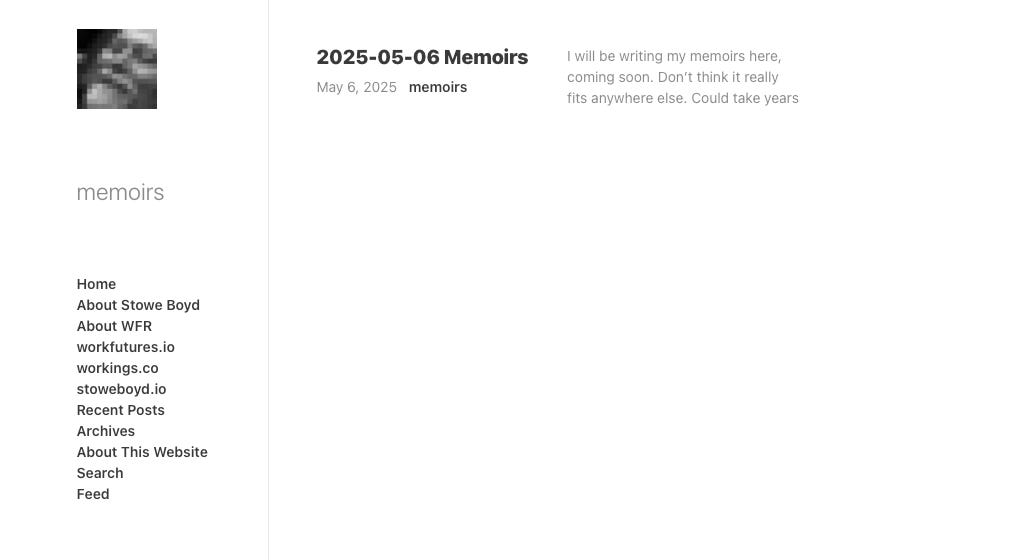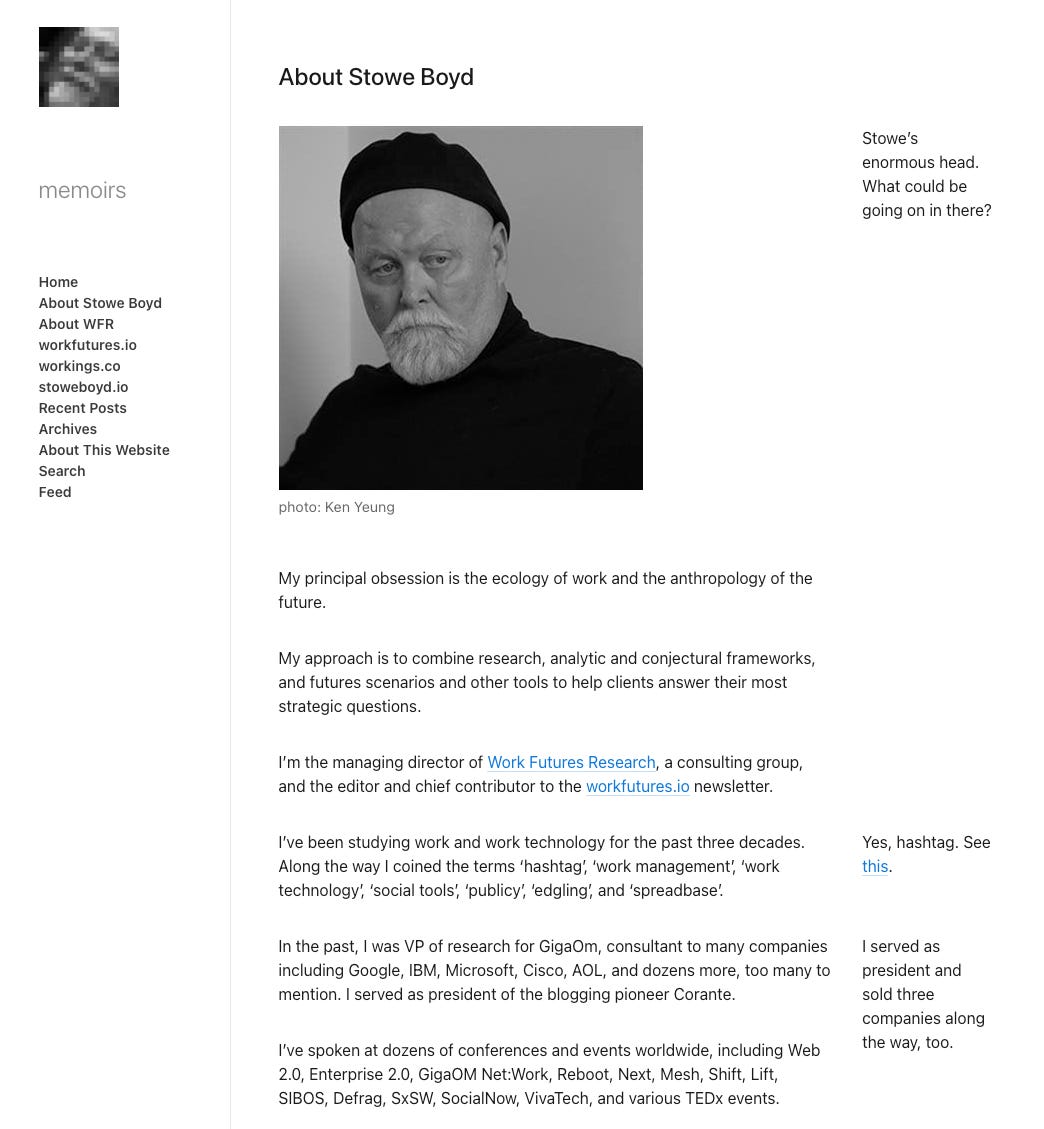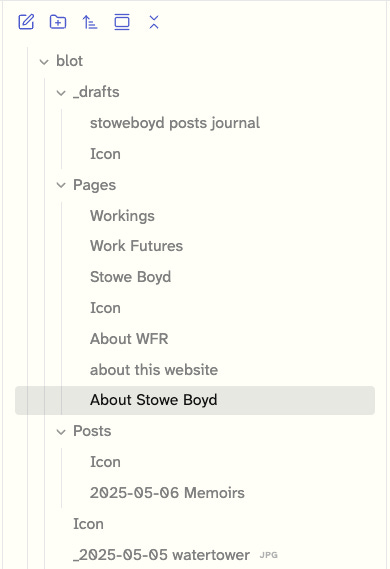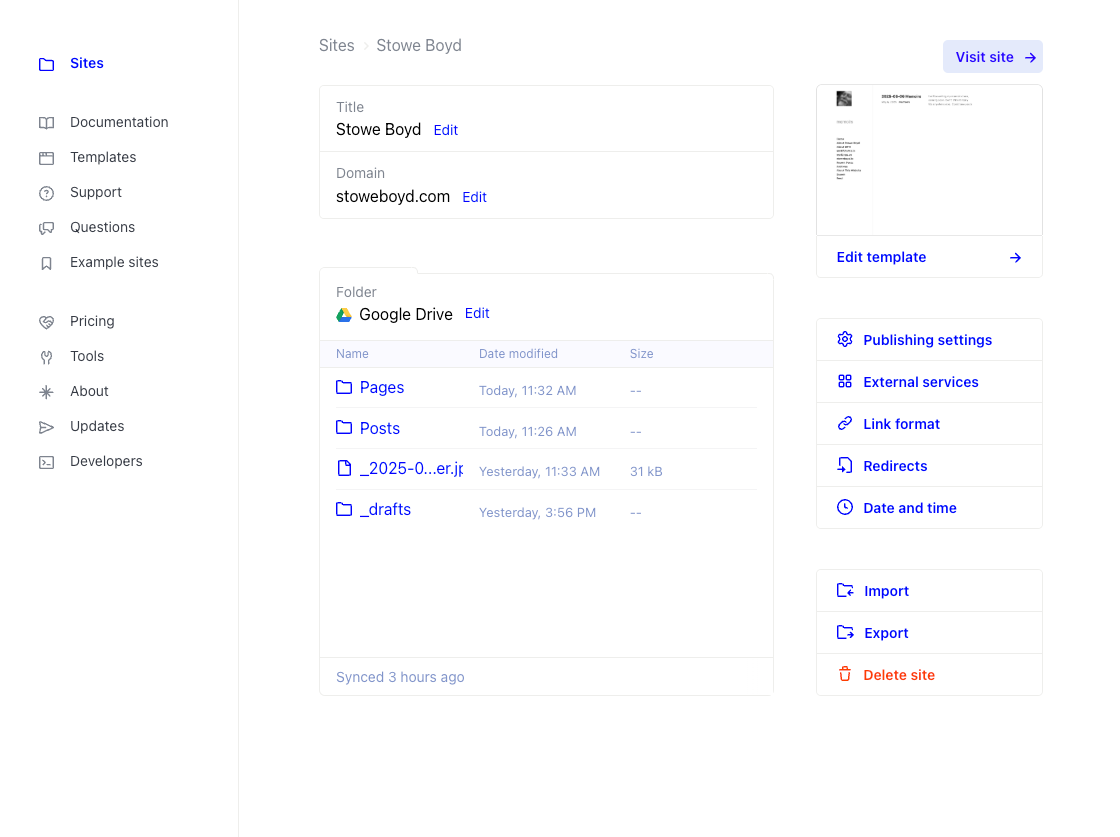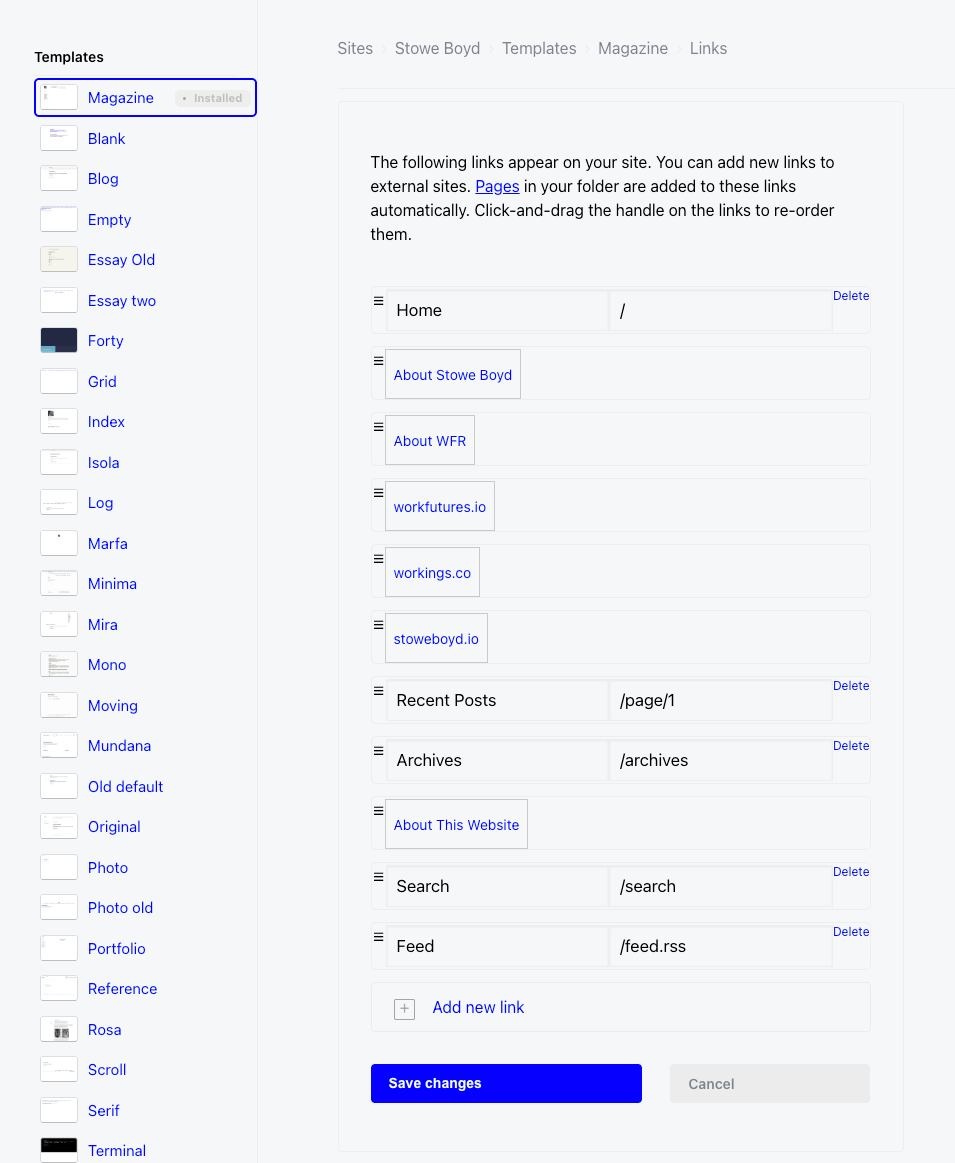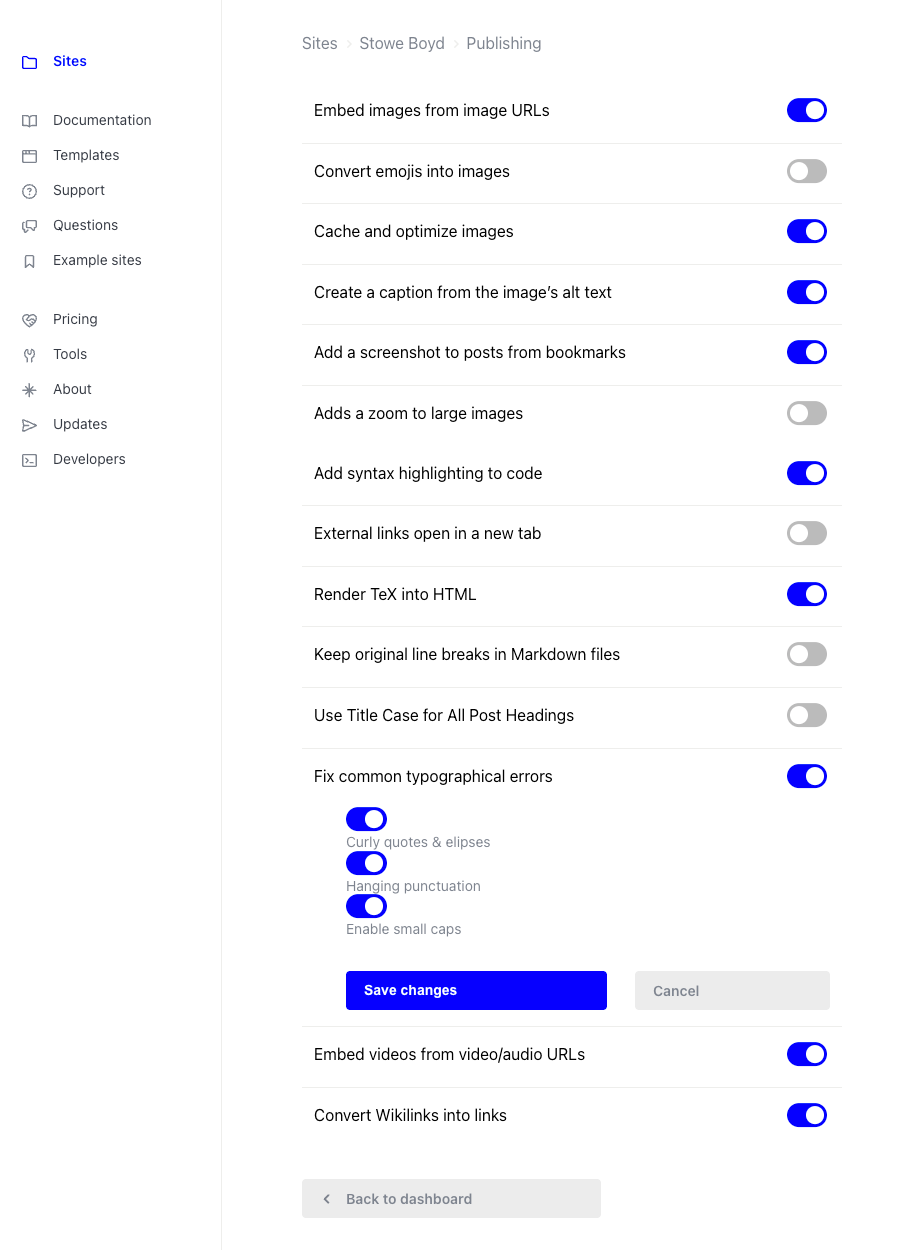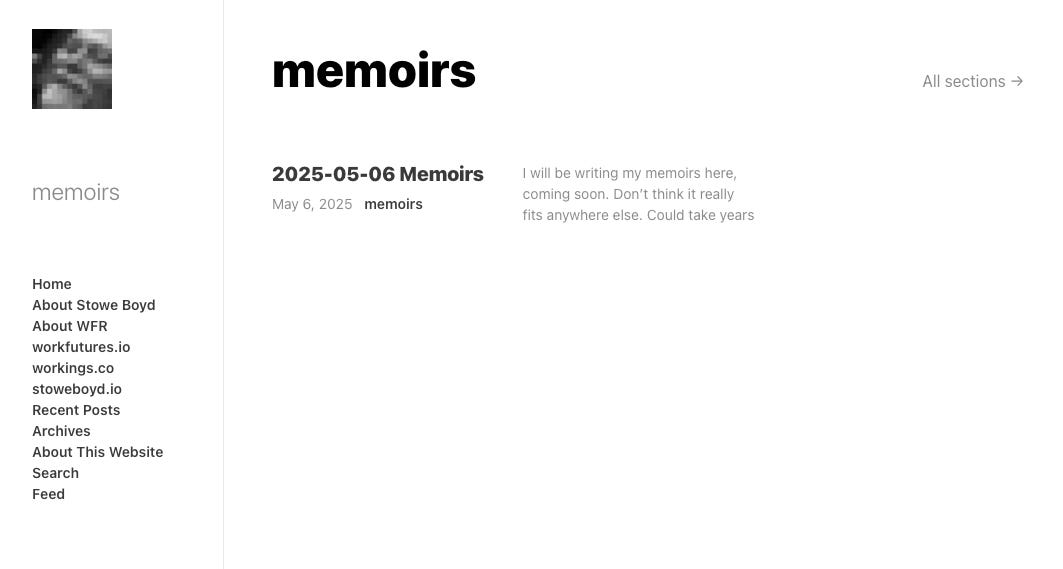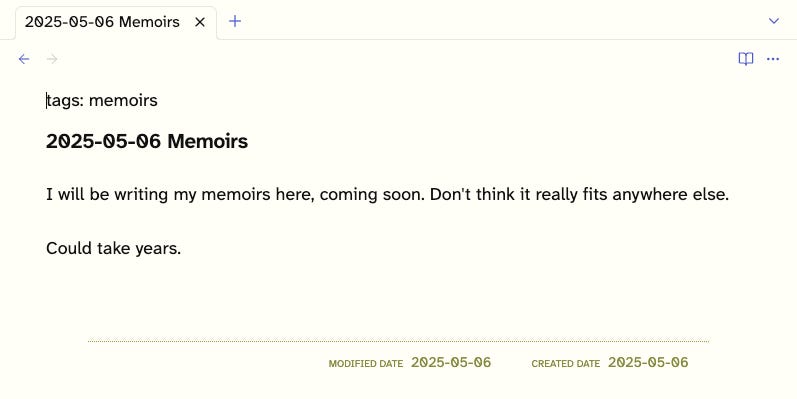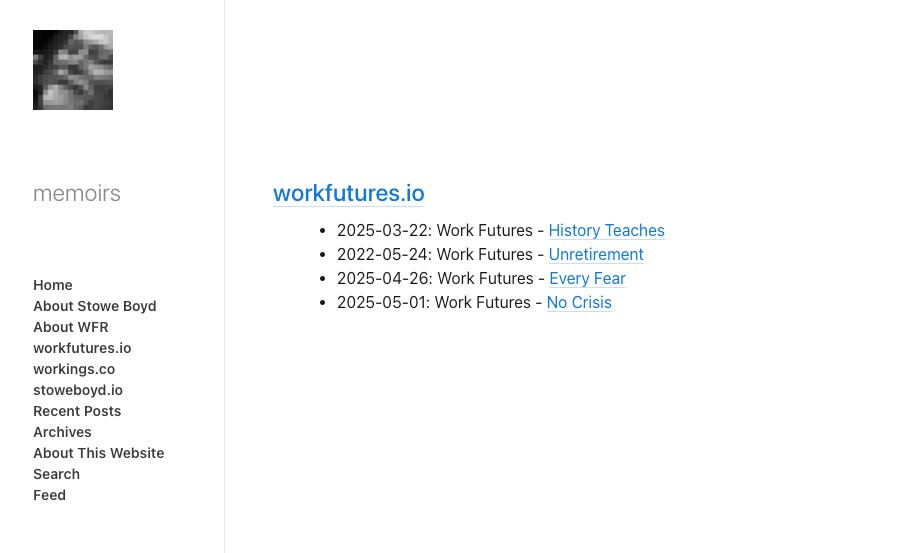First Look: Blot
A simple website builder for Obsidian.
I discovered Blot recently, a minimalist blogging system that integrates with Obsidian. Blot is extremely easy to use but has a few quirks that I will describe as I detail how I set up a website with it.
A peek at stoweboyd.com.
At some juncture, I pointed the stoweboyd.com domain name away from Tumblr to Medium. In both cases, I wasn’t promoting the website very much at all, but in recent months, I had wanted to have a website where I linked out to articles and posts I’ve created on my active writing platforms, like workings.co, workfutures.io, and others. I thought I’d give Blot a try. Check out stoweboyd.com as it stands presently:
I picked a template called Magazine for a few reasons. I like the navigation elements on the left margin, for example.
Note that I am using the tags: metadata field for Memoirs that I will be posting. I’ll highlight that in a bit
Zooming in on the About Stowe Boyd page to demonstrate another feature of this template:
Blot and the template support something like Edward Tufte sidenotes, as with the ‘Stowe’s enormous head.’ wisecrack at the top right. This is not — alas — based on markdown footnotes, like the Tufte Notes CSS built into the Cornell Notes system on Obsidian. Instead, Blot (or at least some templates) supports text like this which is rendered in the right margin of the following block:
{|<} Stowe's enormous head. What could be going on in there?
This is just a quick peek before I get into the inner workings of Blot.
The basics of Blot.
Blot is based on a simple model. You create a folder in Obsidian, sync that with a folder in Google Drive, Dropbox, Git, or iCloud, and the files in that folder are published to your Blot site. I used Google Drive, since I am already backing up my Obsidian vault there.
This is that folder, called blot, in my Obsidian:
Blot treats some subfolders specially:
_drafts - files in
_draftswill not be published to the web. Any file or folder with a preceding underbar is skipped.Pages - files in Pages are automatically added to the navigation bar.
Other subfolders are basically ignored, Like Posts, although files in them are published if Blot knows how to render them.
I haven’t played with Icon files yet.
Main settings.
Once setting up a site — Blot allows multiple sites for a single account and fee — you’ll see this:
As you see at the top center, I have configured my stoweboyd.com domain to point to the site, which worked well, although it took a while to update. Otherwise, the website would be stoweboyd.blot.im.
Edit template and Navigation Links.
I haven’t yet attempted editing a template, but I have used the capabilities provided, especially fiddling with the navigation links. Files placed in the Posts folder automatically are treated as navigation links, like About Stowe Boyd:
You can drag around the links to order them as you’d like.
Publishing Options and Link Format.
I have simply used the defaults on Publishing Options and Link Format so far. I’ll explore only as needed.
Tags.
Perhaps because Blot has no notion of using folders as a website map (other than what was discussed earlier), the service supports aggregation of posts by tags.
Here’s what is shown when you click on Memoirs on the navigation bar:
So far, I only have a single tagged file, and a single tag. But if you go to the site and click around, you’ll get some sense of how rich this could be. I have another Blot-related project going on, and I intend to explore tags more extensively there. I’ll report back. Not only that, but I likely will be folding those two together.
Here’s what the file looks like on Obsidian:
Note that I haven’t spoken much about the content inside the workfutures.io, workings.co, and stoweboyd.io files. My goal is to create an index of posts, articles, and other published materials, and have that live on Blot. Here’s the current state of the workfutures.io index file on Blot:
I created an Obsidian Web Clipper template that captures links to posts on the workfutures.io newsletter on Substack, and through some plugin chicanery, each entry in that file is appended to the workfutures.io index file. It’s a contraption that involves other plugins, and I’d like something better. I will likely explore using Blot tags as a replacement for that system.
An alternative might be more like Wikipedia: imagine if references to topics, people, organizations, and works (books, art, movies, …) could be built up. The workfutures.io post in the image above — No Crisis — might be captured with a short summary, and multiple tags related to the content. That way, I could click on tag like Nick Bloom (the economist) and find all instances where he’s mentioned in any of my publications. A work in progress.
Digital gardening, or website publishing?
In principle, I could publish a large swath of Obsidian files using Blot. In practice, there are difficulties. In particular, I rely extensively on wikilinks to cross-reference files and (sections of files), and I am uncertain of how Blot would handle (or not handle) a reference from a published Blot page to an unpublished Obsidian note in my vault.
My sense is that Blot is better used as a website publishing system, which has different and more modest goals than creating a full-on digital garden.
Other considerations.
There’s a large selection of third-party services that can be included on a Blot site, but I haven’t ranged that far yet.
Conclusions
I’ve been quite happy and surprised with how straightforward the process with Blot has been. I will continue my experiments and report back soon.
Keep reading with a 7-day free trial
Subscribe to Workings to keep reading this post and get 7 days of free access to the full post archives.


